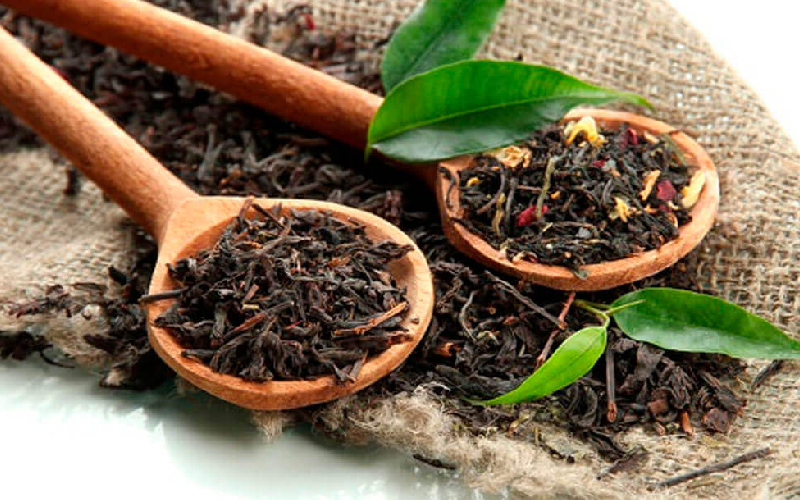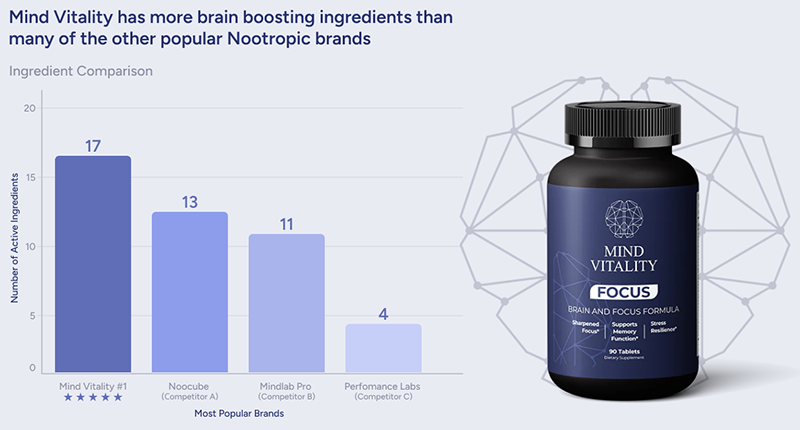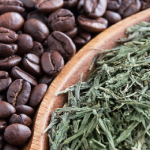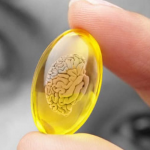Theacrine, like caffeine, is a naturally occurring compound found in the leaves of some types of tea plants. And, again like caffeine, theacrine can eliminate fatigue and improve alertness and concentration. Theacrine, though, doesn’t come with the negative properties that many people experience with caffeine, such as upset stomach, fast heart rate, nervousness, restiveness, or anxiety.
Contents
What Is Theacrine?
Theacrine is a purine alkaloid found primarily in the leaves of the Camellia kucha tea plant species. Purine alkaloids are compounds produced by some plants, and are made up of nitrogen and carbon atoms. Purine alkaloids usually have pronounced physiological effects on people. In addition to theacrine, other examples of purine alkaloids include nicotine, cocaine, and caffeine.
Due to the realization that theacrine has several health benefits, in recent years this compound has attracted attention in the scientific and academic fields. There theacrine is chemically known as 1,3,7,9-tetramethyluric acid, but we’ll stick with theacrine, thank you very much!
For thousands of years, tea has been a popular beverage in many parts of the world, so people have consumed theacrine for that long — without knowing it. Only recently has it been isolated from tea leaves to be sold and consumed as a stand-alone health product.
What Is TeaCrine®?
In your readings about theacrine you’ll almost certainly come across many mentions of something called TeaCrine®. In fact, you’ll probably often see the words theacrine and TeaCrine® used interchangeably. That’s because TeaCrine® is, essentially, the same as theacrine.
TeaCrine® is a patented, clinically trialed form of theacrine — it’s a synthetic compound considered “nature-identical” to theacrine. A company called Compound Solutions uses the same molecular structure of theacrine to manufacture TeaCrine®. This trademarked compound is guaranteed to have a concentration of theacrine greater than 98%.
To avoid confusion and for consistency, the remainder of this article refers to the compound as theacrine. Be aware, though, that everything written here about theacrine applies equally to TeaCrine®.
Why Theacrine May Be Preferable to Caffeine
Theacrine and caffeine are often compared to each other, and discussed together, because they have strong similarities. The similarities are so strong that it’s believed that plants that contain theacrine — like the Camellia kucha tea plant — might use caffeine as a base to make theacrine.
The below figure shows the molecular structure of both theacrine and caffeine. Even if you have little interest in chemistry you can tell that the two molecules are analogs — compounds with very similar structures. If you do have an interest in chemistry, the difference is that molecularly theacrine is caffeine with the addition of a methyl group and a ketone group.
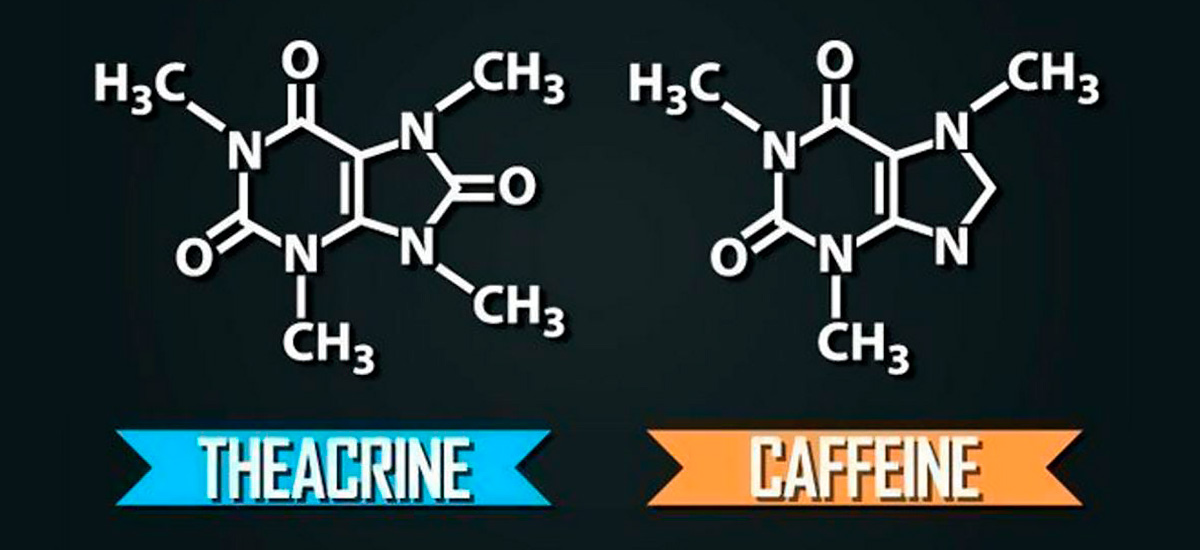
Caffeine may be the most popular nootropic in the world. Caffeine’s cognitive benefits include increased energy, alertness, concentration, and attention, and it also improves mood. Theacrine, a purine alkaloid like caffeine with a molecular makeup similar to caffeine, also provides these same cognitive benefits. Which would seem to nootropically make theacrine and caffeine equals. However, there are a couple of reasons why theacrine may have an edge over caffeine.
Theacrine Provides a Jitters-Free Stimulation
Both caffeine and theacrine stimulate the central nervous system, contributing to the stimulating effect of each of these compounds. Theacrine, though, doesn’t affect the cardiovascular system in the same way caffeine does. This means theacrine doesn’t induce a spike in blood pressure, and therefore doesn’t bring on an increased heart rate and a case of the “jitters.”
Theacrine promotes alertness and eliminates drowsiness, but in a smoother, more sustained way. There isn’t quite the same “buzz” as delivered by caffeine, but there is still a stimulating effect — without the nervousness and restlessness many caffeine users experience.
Theacrine’s slower rise in stimulation is accompanied by a slower drop-off in stimulation. That means there’s no crash as theacrine’s effects wear off, and no after-effects such as grogginess, lethargy, or mood swing.
Theacrine Consumption Doesn’t Produce a Tolerance Buildup
Most people who are daily coffee drinkers know all about caffeine tolerance — long gone are the days when a single morning cup of java gets them up and running, raring to greet the day!
It’s well-known that constant, repeated exposure to caffeine lessens its energizing effects on the body. There’s nothing remarkable about that — the human body builds a tolerance to many stimulants, whether they be natural or synthetic. Over time, you find you require more coffee to realize the same effects.

Unlike with caffeine, the human body doesn’t seem to build a tolerance to theacrine — even when theacrine is consumed consistently. This means when you find the theacrine dose that works best for you, you can “set it and forget it” — you don’t have to continuously up your daily intake to reap the same benefits.
Along with a tolerance build-up, high caffeine consumption may lead to dependency. Many people who are big coffee drinkers experience withdrawal symptoms if they quickly cut back or quit “cold turkey.” These symptoms can include any combination of drowsiness or fatigue, headaches, irritability, and difficulty concentrating.
Once again, unlike with caffeine, the human body doesn’t develop a dependency on theacrine. If you take theacrine consistently and then stop, you shouldn’t experience any withdrawal symptoms.
A study published in the Journal of the International Society of Sports Nutrition (JISSN) involving sixty healthy men and women given theacrine supplements of 300 mg daily for eight weeks showed theacrine did not lead to tolerance build-up or withdrawal symptoms.
The bottom line: theacrine gives the same results as caffeine (improvements in concentration, mood, energy, and so forth), without having to constantly increase the dosage!
How Theacrine Works as a Nootropic
Theacrine’s powerful nootropic benefits are the result of it inhibiting adenosine receptors and modulating levels of dopamine and other neurotransmitters.
Theacrine Inhibits Adenosine Receptors
Cellular receptors are a type of protein structure that exist in or on the surface of cells and play a role in cells communicating with one another. Different types of receptors bind with specific substances to transmit a message to a cell to signal to that cell that it should take (or not take) some action.
Adenosine is a neurochemical that plays a role in sedation, relaxation, and fatigue. Cells have adenosine receptors that bind with adenosine. When there is a build-up of adenosine, a person slows down and cognitive abilities decrease. One property of theacrine is that it inhibits adenosine receptors — theacrine is an adenosine antagonist. This blocking of adenosine minimizes sedation, giving a person a neurological boost.
As neurons fire away doing their work, eventually this action normally results in a build-up of adenosine to signal the brain should slow down and rest. Theacrine stops the adenosine build-up and lets the brain carry on at full capacity. This is one way theacrine acts as a nootropic. It’s also one way caffeine acts as a nootropic — it too is an adenosine antagonist.
Theacrine Modulates Dopamine and Other Neurotransmitters
Neurotransmitters are brain chemicals that serve as messengers that send signals from one neuron (brain cell) to another. Dopamine is a primary neurotransmitter, and it’s responsible for the control of the brain’s pleasure centers and reward-motivated behavior and motivation. Increased dopamine signaling is favorably associated with learning, attention, mood, and task initiation and follow-through.
Studies show that theacrine elevates dopamine levels in the brain. Theacrine does this by activating cell dopamine receptors. Just as theacrine affects adenosine cell receptors (discussed above), it also affects dopamine cell receptors. Neurons (brain cells) have five types of receptors that specifically support dopamine signaling — they’re named D1 through D5. Theacrine has the ability to activate the D1 and D2 dopamine receptors. These receptors play a role in the following functions:
- D1: memory, attention, locomotion, and impulse control
- D2: memory, attention, locomotion, sleep, and learning
As you can see from the above, being a D1 and D2 receptor agonist (a chemical that binds to a receptor and activates it) gives theacrine nootropic benefits. In addition to theacrine being able to “mimic” dopamine to activate dopamine receptors, theacrine also actually raises dopamine levels by preventing existing released dopamine from being reabsorbed by the body.
In regards to neurotransmitters, theacrine does most of its work with dopamine. But theacrine also influences serotonin, acetylcholine, and norepinephrine levels.
- serotonin: mood, memory, learning speed, and neuroplasticity
- acetylcholine: mood, memory, learning, and attention
- norepinephrine: mood, working memory, attention, and behavioral flexibility
Summary of Theacrine Nootropic Benefits
Theacrine inhibits adenosine receptors, which limits the sedative effects of the neurochemical adenosine. Theacrine also modulates levels of dopamine, acetylcholine, serotonin, and norepinephrine, upping the effects of these cognitive-enhancing neurotransmitters. Collectively, this means theacrine positively affects many areas of cognition.
- Better memory recall
- Faster learning speed
- Increased alertness
- Improved focus, attention, and concentration
- Greater motivation
- Elevated mood
- Increased physical and mental energy
- Reduced stress and anxiety
Best of all, it accomplishes the above without causing jitteriness, irritability, or a post-buzz crash — all possibilities of its related nootropic, caffeine.
Stacking Theacrine With Other Nootropics
In the world of nutritional supplements, stacking refers to identifying two (or several) nutrients that each address a similar health concern, and then taking those supplements at the same time. You “stack” one supplement onto another. While each supplement has properties to reach the same goal, each supplement contributes to that goal in a different way. Stacking is particularly popular in the world of nootropics.
Stacking Theacrine With Methylliberine (Dynamine™)
Like theacrine, methylliberine is a purine alkaloid found in the leaves of Camellia kucha tea plants. As mentioned, a purine alkaloid is a nitrogen|carbon plant compound that has physiological effects on humans. Methylliberine is so similar to theacrine in molecular composition it’s often referred to as a “cousin” of theacrine.
The nootropic benefits of methylliberine are pretty much the same as the benefits of theacrine. The mechanism of action of methylliberine — how it produces its effects in the body — is also similar to how theacrine works. Methylliberine inhibits adenosine receptors, which increases energy, and it raises levels of dopamine and other cognitive-benefiting neurotransmitters. Also, like theacrine, methylliberine doesn’t come with the jitteriness or nervousness of caffeine.
If methylliberine is so similar to theacrine, why would a person choose methylliberine in place of theacrine? Or stack methylliberine with theacrine? The answer to both questions is in the time-frame in which methylliberine’s effects peak, and last.
Methylliberine is fast-acting — faster acting than theacrine. Methylliberine’s effects also wear off much faster than theacrine. If a person wants a physical and mental boost right now, and doesn’t mind that the boost will drop off after a short time, then methylliberine is a better choice than theacrine.
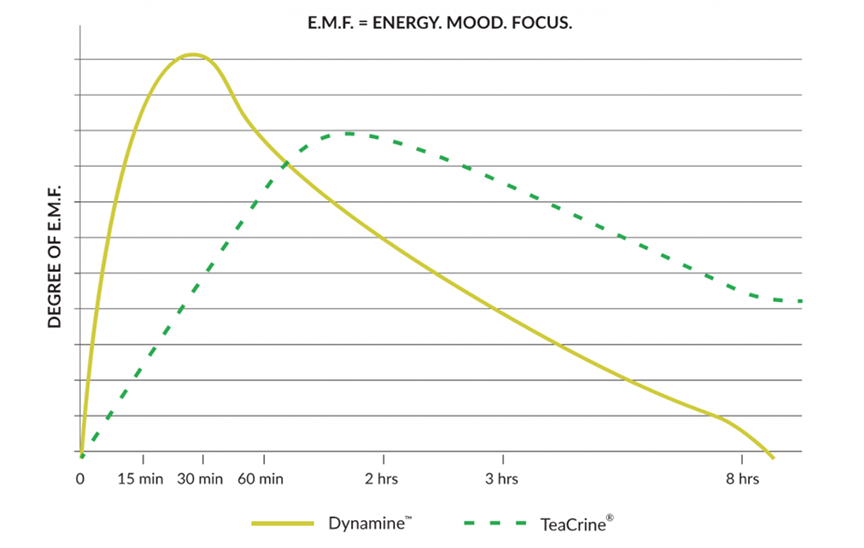
This brings us to stacking. If a person wants to get both a quick boost in energy and have that energy level to be long lasting, then combining methylliberine with theacrine will produce just that effect. Taking the two supplements together provides the best of both worlds in that you get an immediate increase in focus and energy, followed by a sustained, long, “slow burn” energy — a combination that studies have shown to be effective and safe.
Earlier, in our discussions of theacrine, we mentioned TeaCrine®, a lab-manufactured compound that is “nature-identical” to theacrine. It truly is identical, which is why TeaCrine® is theacrine. Compound Solutions, the lab that produces TeaCrine®, also manufactures their own trademarked methylliberine — Dynamine™. Compound Solutions licenses both TeaCrine® and Dynamine™ to several supplement makers for use in their own products. That’s why when you’re shopping around for a theacrine supplement you’ll find products labeled TeaCrine®, and when you’re looking for a methylliberine supplement you’ll see products labeled Dynamine™. As TeaCrine® is to theacrine, Dynamine™ is to methylliberine.
Stacking Theacrine With Caffeine
If you aren’t a big coffee drinker, then stacking theacrine with methylliberine is a great option to get a fast, and long-lasting, boost equal to or greater than that of caffeine, without the bad side effects of caffeine.
If you are a big coffee drinker, and don’t want to give up your coffee-supplied caffeine fix, you can still drink your java and supplement that drink with a theacrine supplement.
While theacrine does share a very similar molecular structure with caffeine, theacrine is not a type of caffeine. So taking theacrine with coffee isn’t bad in the sense of “oh no, you’re giving your body too much caffeine!” That’s not the case at all.
Theacrine paired with caffeine extends and enhances the effects you normally achieve from your cup (or two or three!) of coffee. At the same time, it has been shown that this pairing minimizes or eliminates the drawbacks of high or even chronic caffeine consumption. If you take theacrine with your coffee, you can forget about caffeine tolerance, irritability, nervousness, or crashing.
Taking Theacrine (TeaCrine®) or Methylliberine (Dynamine™) Supplements
Both theacrine (TeaCrine®) and methylliberine (Dynamine™) are very safe supplements with few, if any, side effects.
Theacrine (TeaCrine®) Dosage
A compound that is said to have a biphasic dose response is one that produces two different outcomes, dependent on whether a low or high dose is consumed. Theacrine is interesting in that it has such a biphasic dose response. Taken at a low dose, theacrine acts as a sedative, while taken at a higher dose, it acts as a stimulant.
For theacrine, a low dose is considered to be 50 mg or less. If you’re taking theacrine for a caffeine-like energy boost, then you’ll want to take a dose of 100 mg or more.
There’s no “best time” of the day to take theacrine. People often take it in the morning with, or in place of, a cup of coffee — but you can take it any time you’re looking for a physical and mental energy boost. Taking 100 mg to 200 mg as one dose is common. Exceeding 400 mg in a day is considered excessive.
Most people are prone to developing a tolerance for caffeine — they need to keep taking more and more to achieve the same effects. Not so with theacrine. When you find a dose you’re comfortable with, that’s probably the dose you can stick with — day after day, and year after year.
Theacrine Side Effects
Compared to caffeine, theacrine has virtually no side effects. In fact, taking theacrine with coffee will reduce or eliminate any caffeine side effects you experience from coffee alone.
Keep in mind that theacrine has been consumed in the form of Camellia kucha tea for thousands of years. If theacrine was accompanied by negative side-effects, tea would have a bad reputation — which it certainly doesn’t.
Methylliberine (Dynamine™) Dosage
There is no set, standard dose for methylliberine. People take from as little as 50 mg a day to as much as 400 mg per day. The most typical dosage is 100 mg or 200 mg per day.
Methylliberine (Dynamine™) Side Effects
Side effects of methylliberine are similar to those of theacrine. Which is to say, virtually none. None of the side effects of caffeine pertain to methylliberine.
Conclusion
Theacrine is a compound found in the leaves of some types of tea plants. Theacrine is chemically very similar to caffeine and its nootropic benefits are similar as well — it eliminates fatigue and improves focus, concentration, attention, motivation, memory, and mood. Theacrine has one huge advantage over caffeine: its nootropic benefits aren’t accompanied by the nervousness, anxiety, or jitteriness that many caffeine users experience.
This article focused on theacrine, but it covered a few different, related compounds. Here’s a recap of these nootropics.
- Caffeine is loved by millions for its wake up buzz, but it’s also used by millions for its powerful nootropic benefits.
- Theacrine is a constituent of the Camellia kucha tea plant. It has a molecular structure similar to caffeine, and has nootropic benefits similar to caffeine. Theacrine differs from caffeine in that it doesn’t come with a jittery side effect because it provides a less intense buzz, and a much slower rise, and drop-off, of its stimulating properties.
- TeaCrine is a branded form of theacrine produced by the nutraceutical company Compound Solutions. If you buy a supplement labeled TeaCrine, you’re getting theacrine.
- Methylliberine is another constituent of the Camellia kucha tea plant, just as theacrine is. Methylliberine has a chemical structure similar to theacrine (so it also has a chemical structure similar to caffeine), and it has nootropic properties similar to theacrine (and caffeine). Methylliberine differs from theacrine in that it is fast-acting. Instead of a slow, steady rise and fall in alertness and energy, it’s fast-acting and has a much quicker drop-off in effects.
- Dynamine is a branded form of methylliberine, and like TeaCrine it is also produced by Compound Solutions. If you buy a supplement labeled Dynamine, you’re getting methylliberine.


